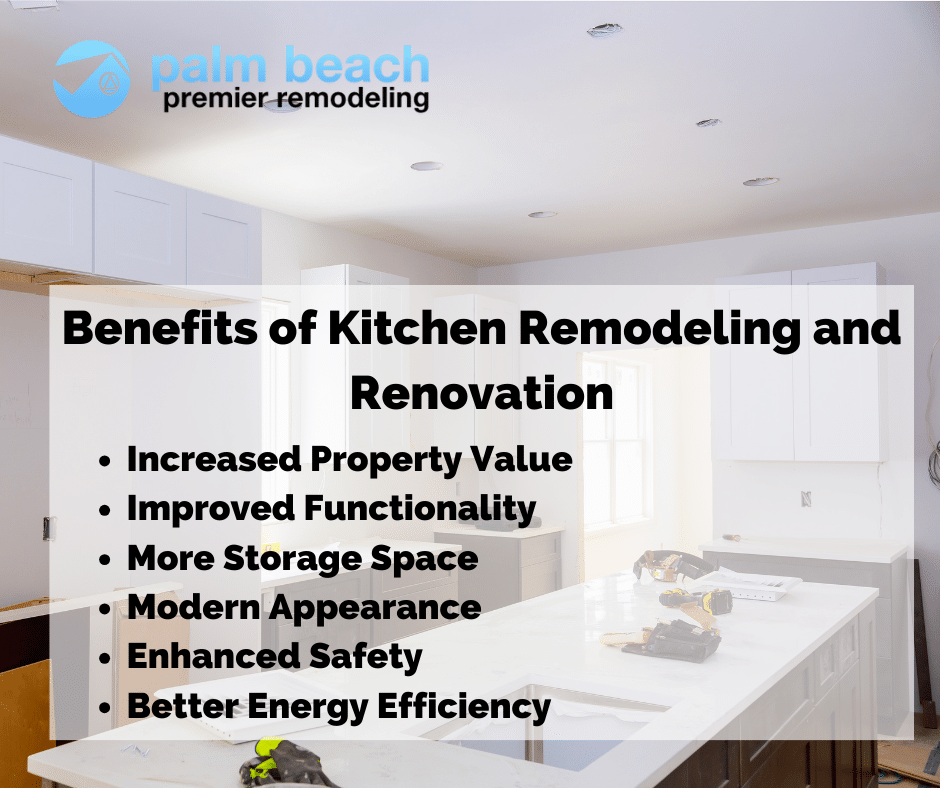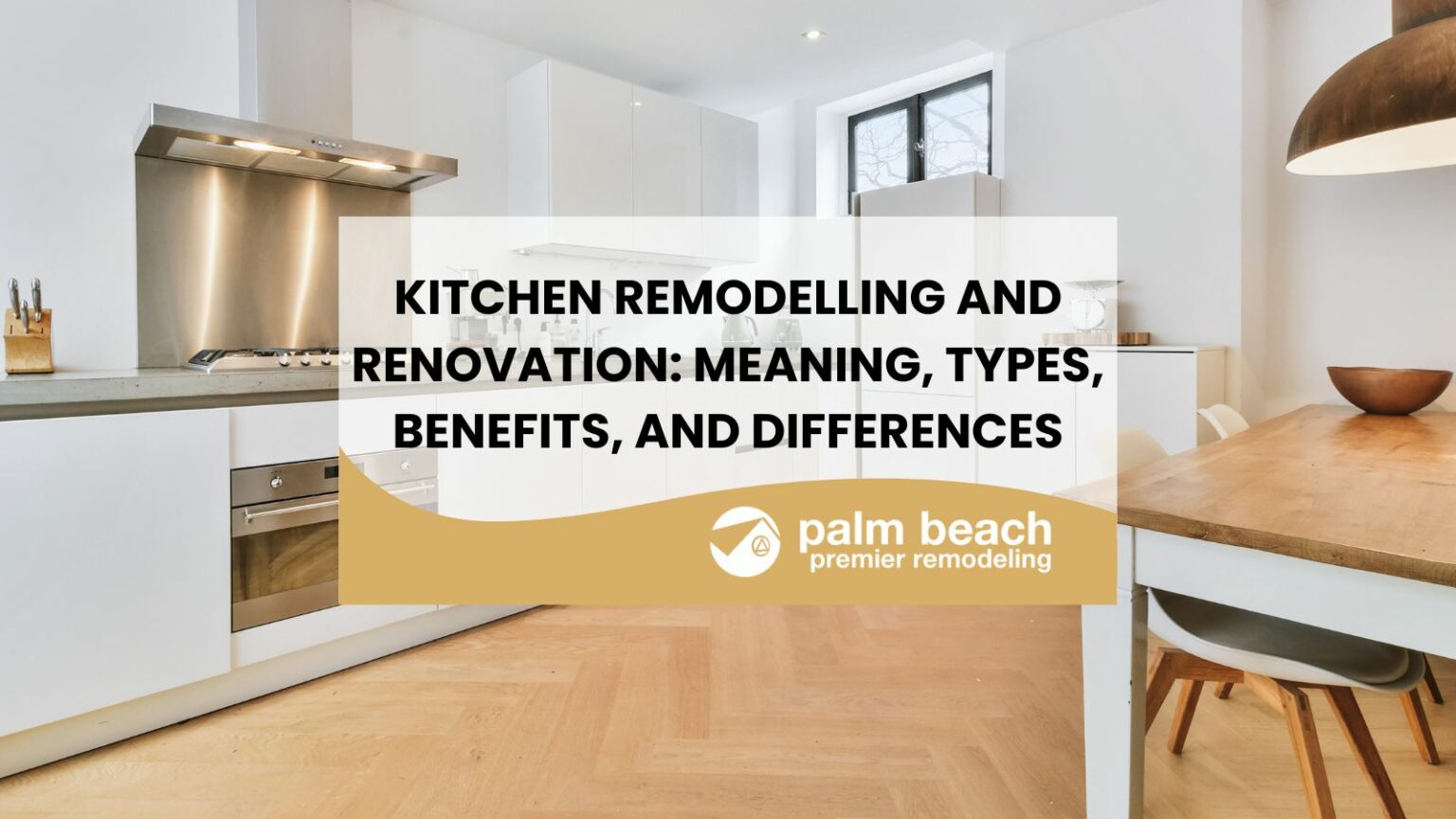Kitchen remodeling and renovation are terms often used interchangeably, but they encompass distinct processes and objectives within the realm of home improvement.
Remodeling typically involves altering the structure or design of a kitchen to create a new layout or aesthetic. It encompasses a comprehensive overhaul of the space, often including significant structural changes and the incorporation of modern amenities.
Renovation, on the other hand, focuses more on restoring or updating existing elements of the kitchen without necessarily changing its fundamental layout or structure. This involves refreshing surfaces, replacing fixtures, or upgrading appliances to enhance functionality and aesthetics while retaining the original framework of the space.
Understanding these distinctions helps homeowners make informed decisions when planning and executing kitchen improvement projects. Both remodeling and renovation options offer opportunities to improve the overall appeal and functionality of the kitchen, catering to the different needs and preferences of homeowners.
What Is Kitchen Remodeling?
Kitchen remodeling involves fundamentally altering the structure, layout, and style of a kitchen space to create a new and distinct environment. This process often includes intricate design modifications, and construction work such as electrical and plumbing upgrades, and even involve property extensions. It aims to provide a completely transformed kitchen area tailored to the homeowner’s preferences and needs. Kitchen renovation, on the other hand, focuses on restoring an existing kitchen to a good state of repair without drastically changing its layout or structure. This typically involves replacing fixtures, fittings, cabinets, and other elements to enhance the kitchen’s aesthetics, functionality, and value.
What is Kitchen Renovation?
Kitchen renovation involves making updates or improvements to an existing kitchen while maintaining its basic layout and functionality. This includes upgrading fixtures, finishes, and appliances without changing the fundamental structure of the kitchen. It’s ideal for those looking to refresh their kitchen’s appearance or address minor issues without undergoing a complete overhaul. Renovation projects typically require fewer resources and do not necessitate major design changes or permits, making them a more cost-effective option compared to full remodels.
Types of Kitchen Remodelling and Renovation
When it comes to transforming your kitchen, there are various types of remodeling and renovation projects to consider. From minor updates to major overhauls, each type offers unique benefits and opportunities to enhance both the functionality and aesthetics of your kitchen space. Let’s explore the different types of kitchen remodeling and renovation to help you determine the best approach for your needs and preferences.
- Small or Minor Remodelling
- Involves minor changes and updates to the kitchen layout or design.
- Typically includes cosmetic enhancements like new paint, fixtures, or hardware.
- A budget-friendly option for homeowners looking to refresh the appearance of their kitchen without major structural alterations.
- Midrange or Partial Remodelling
- A more extensive renovation often involves replacing countertops, cabinets, or flooring.
- This includes upgrading appliances to more modern and energy-efficient models.
- Offers a balance between cost and scope, providing noticeable improvements to the kitchen’s aesthetics and functionality.
- Major or Upscale Remodelling
- A comprehensive overhaul of the kitchen space often involves important structural changes.
- Includes luxury upgrades such as custom cabinetry, high-end appliances, and premium materials.
- Ideal for homeowners seeking a complete transformation and willing to invest in creating a luxurious and personalized kitchen environment.
- Cosmetic Kitchen Renovation
- Focuses on superficial changes that enhance the visual appeal of the kitchen.
- Common updates include replacing countertops, backsplashes, or cabinet hardware.
- Provides a quick and budget-friendly way to give the kitchen a fresh look without extensive construction or remodeling.
- Functional Kitchen Renovation
- Aimed at improving the functionality and efficiency of the kitchen layout.
- Involves reconfiguring the floor plan, expanding storage space, or optimizing workflow.
- Designed to enhance the usability and practicality of the kitchen, catering to the specific needs and preferences of the homeowner.
- Aesthetic Kitchen Renovation
- Focuses on enhancing the overall look and feel of the kitchen space.
- Includes updates to lighting, color scheme, and decorative elements to create a visually appealing environment.
- Emphasizes design elements that reflect the homeowner’s style and personality, transforming the kitchen into a welcoming and stylish space.
- Layout-Oriented Kitchen Renovation
- Concentrates on optimizing the layout and functionality of the kitchen area.
- Involves removing walls, expanding the kitchen footprint, or rearranging appliances and fixtures.
- Aims to maximize space utilization and improve traffic flow, creating a more spacious and efficient cooking environment.
- Style-Focused Kitchen Renovation
- Centers on updating the kitchen’s design style to align with current trends or personal preferences.
- Includes changes to finishes, materials, and decorative elements to achieve a desired aesthetic.
- Allows homeowners to express their creativity and create a kitchen space that reflects their unique taste and lifestyle.
By understanding the various types of remodeling and renovation options available, you can set out on a project that not only meets your budget and timeline but also reflects your personal style and enhances the overall value of your home. From small updates to complete transformations, the possibilities for creating your dream kitchen are endless.

Benefits of Kitchen Remodeling and Renovation
Remodeling or renovating your kitchen enhances living space significantly. Improving your home significantly increases its value and makes it more appealing to potential buyers, surpassing mere aesthetics.
Upgrading cabinets, countertops, and appliances not only modernizes the look but also improves functionality and efficiency, making everyday tasks easier. By optimizing storage and layout, you will create more space and reduce clutter, contributing to a more organized and enjoyable cooking experience.
Moreover, incorporating energy-efficient appliances and sustainable materials leads to long-term cost savings and environmental benefits. Investing in kitchen remodeling or renovation transforms your kitchen into a space that aligns with your lifestyle and preferences while adding value to your home.
Here are the key advantages of remodeling or renovating your kitchen:
- Increased Property Value: Renovating your kitchen significantly boosts the value of your home, making it a wise investment for the future.
- Improved Functionality: Enhance the layout and features of your kitchen to make cooking and meal preparation more convenient and efficient.
- More Storage Space: Address clutter by adding cabinets, extending existing ones, or installing shelves to optimize storage.
- Modern Appearance: Update the aesthetics of your kitchen with new flooring, cabinets, countertops, or a fresh coat of paint for a more contemporary look.
- Enhanced Safety: Upgrading appliances and fixtures can improve safety by reducing risks associated with outdated equipment.
- Better Energy Efficiency: Save on energy costs by installing energy-efficient appliances and utilizing sustainable materials for countertops and flooring.
These benefits make kitchen remodeling a worthwhile investment, offering both practical and aesthetic improvements to your home.
Kitchen Remodelling vs Renovation
Kitchen remodeling and renovation are two distinct approaches to improving a kitchen’s appearance and functionality. Remodeling involves making crucial structural changes, while renovation focuses on refreshing or restoring existing features without major structural modifications
The table below demonstrates the differences between Kitchen Remodelling and renovation:
| Aspect | Kitchen Remodelling | Kitchen Renovation |
| Definition | Involves complex design alterations and construction, including electrics, plumbing, re-plastering/tiling, and property extensions. | Involves restoration or updates to the existing kitchen space without major changes to the layout. |
| Structural Changes | Removing or modifying walls to create an open floor plan or adding more storage space. | Primarily focuses on updating existing elements without significant structural alterations. |
| Design Alterations | Often entails changing the layout or structure of the kitchen, such as adding new features or reconfiguring the space. | Renovation involves refreshing the aesthetics and functionality of the kitchen without major design changes. |
| Scope of Work | Extensive work is required, including electrical, plumbing, and construction work, as well as potential property extensions. | Kitchen renovation is smaller in scope compared to remodeling, focusing on surface-level updates and repairs. |
| Cost | Kitchen remodeling is typically more expensive due to the complexity of changes and construction involved. | It is less expensive as it focuses on basic upgrades and repairs without major structural alterations. |
| Timeframe | A longer timeframe is required due to the complexity of alterations and construction work involved. | Involves shorter timeframe to complete. |
| Complexity | More complex due to the need for electrical, plumbing, and construction work, as well as potential property extensions. | Less complex as it primarily involves surface-level upgrades and repairs. |
| Purpose | To completely transform the kitchen space, often resulting in a new layout and design. | To refresh and update the existing kitchen space without major structural changes. |
| Extent of Work | Involves crucial alterations to the layout, structure, and design of the kitchen, often requiring extensive work. | Limited to basic upgrades and repairs, such as replacing fixtures and finishes. |
| Cost-effectiveness | Executing the renovation project proficiently will undoubtedly increase the property’s value, despite the higher costs involved. | Often more cost-effective for basic upgrades and repairs, providing a refreshed look and feel without breaking the bank. |
When to Choose Remodeling or Renovation for Your Kitchen?
The choice between kitchen remodeling and renovation depends on your personal preference, the current state of your kitchen, and your budget. Have a clear understanding of your needs and the goals you want to achieve by making changes to your kitchen and consult with a reputable contractor or interior designer to help guide you through the process effectively.
Lastly, ensure proper planning and execution by hiring experienced professionals, obtaining necessary permits, and adhering to a realistic timeline and budget. Communicate clearly with contractors or designers, review their portfolios and credentials, and establish a detailed plan to achieve your desired outcome while minimizing disruptions and maximizing efficiency.
What is the difference between cabinet refacing and replacing during kitchen remodeling?
Cabinet refacing involves updating the exterior surfaces of existing kitchen cabinets, such as doors, drawer fronts, and hardware, while keeping the cabinet boxes intact. This is a cost-effective method for changing the appearance of the kitchen without a full replacement. On the other hand, replacing cabinets is a more extensive process that involves removing the old cabinets and installing new ones. This option allows for altering the layout of the kitchen and adding new functionality.
What are the common challenges faced during kitchen remodeling and how can they be addressed?
Kitchen remodeling often involves several challenges, including budget constraints, unexpected structural issues, and extended timelines. Addressing budget concerns starts with thorough planning and getting detailed quotes from contractors to avoid surprises. For structural issues, such as unexpected plumbing or electrical problems, it’s essential to have a contingency fund and hire experienced professionals who can adapt plans as needed. To manage timeline extensions, maintain clear communication with contractors and set realistic deadlines that account for potential delays.
How does kitchen renovation add value to a home?
Kitchen renovations can significantly increase the value of a home by improving its functionality, aesthetic appeal, and overall desirability. Modern, updated kitchens often serve as a major selling point for potential buyers. Key updates such as new countertops, efficient appliances, and functional layouts can make the kitchen more appealing and user-friendly, which in turn can boost the property’s market value.
How long does a typical kitchen remodel take and what factors could extend the timeline?
The duration of a kitchen remodel can vary widely depending on the scope of the project. A minor remodel might take a few weeks, while a major renovation could last several months. Factors that could extend the timeline include delays in material delivery, unexpected structural issues, and changes to the project scope initiated by the homeowner. Additionally, if custom pieces or specialty items are involved, this can also increase the project duration. Planning for these possibilities and having a clear contract with your contractor can help manage expectations and keep the project on track.

